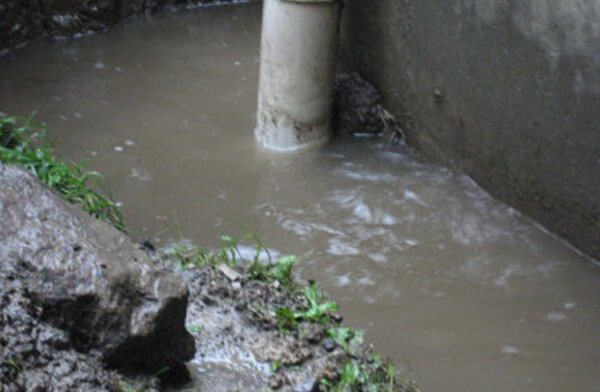We've uncovered this article pertaining to Leaking water lines directly below on the web and reckoned it made perfect sense to share it with you on this page.

Early discovery of dripping water lines can alleviate a prospective disaster. Apart from conserving you money, it will lessen the worry and also irritation. The moment you find a leakage, calling your plumber for repair services is the very best service. Some tiny water leakages may not be noticeable. Below are some hacks that assist if you can not discover it with your naked eyes.
1. Examine the Water Meter
Every house has a water meter. Inspecting it is a proven way that helps you uncover leaks. For starters, turn off all the water resources. Ensure no person will certainly purge, utilize the faucet, shower, run the cleaning maker or dishwashing machine. From there, go to the meter and watch if it will certainly transform. Given that nobody is using it, there ought to be no motions. If it moves, that shows a fast-moving leak. Likewise, if you identify no changes, wait a hr or two as well as examine back again. This indicates you might have a sluggish leakage that might even be below ground.
2. Examine Water Consumption
Analyze your water bills as well as track your water intake. As the one paying it, you should observe if there are any kind of discrepancies. If you find sudden changes, in spite of your intake being the same, it indicates that you have leaks in your plumbing system. Keep in mind, your water costs should fall under the very same array each month. A sudden spike in your expense suggests a fast-moving leakage.
Meanwhile, a consistent rise on a monthly basis, despite the very same behaviors, shows you have a sluggish leakage that's also gradually escalating. Call a plumber to extensively check your residential property, especially if you feel a warm area on your floor with piping underneath.
3. Do a Food Coloring Test
When it comes to water usage, 30% comes from toilets. If the shade in some way infiltrates your dish throughout that time without flushing, there's a leak in between the container and also dish.
4. Asses Outside Lines
Don't fail to remember to examine your outside water lines too. Needs to water seep out of the link, you have a loose rubber gasket. One small leakage can waste heaps of water and increase your water bill.
5. Check and also Analyze the Circumstance
Property owners must make it a routine to examine under the sink counters and even inside cupboards for any bad odor or mold development. These 2 red flags indicate a leak so timely focus is required. Doing routine examinations, also bi-annually, can save you from a major problem.
Examine for stainings as well as weakening as most devices and also pipelines have a life expectancy. If you think dripping water lines in your plumbing system, don't wait for it to rise.
Early discovery of leaking water lines can minimize a possible disaster. Some small water leakages may not be noticeable. Examining it is a surefire means that helps you discover leakages. One little leakage can lose bunches of water as well as spike your water costs.
If you suspect leaking water lines in your plumbing system, do not wait for it to escalate.
How to Know If Your Home Has a Hidden Leak
Water Meter Reveals Inexplicable Water Usage
If you’d like to test whether or not there’s a leak somewhere in your home, you can do this using your water meter. Here is how to conduct the test:
Don’t use any water in your home for at least 30 minutes; this also means not turning on faucets or water-using appliances.
Go outside, and check your water meter for activity.
If your water meter shows that there was activity, even though no one was using any water, this proves that there is a leak in your home.Visible Mold or Mildew Growth
Leaks behind walls create moist, dark environments that allow mold and mildew to grow and thrive. Eventually, you might see mold growth forming on the wall closest to a hidden leak.
If mold is growing in an area that receives a high amount of moisture, such as a bathroom, it may simply be an indication that better ventilation is needed. However, if you see mold growth on a wall or the ceiling in an area where you would not expect, you probably have a hidden leak.
Musty, Mildew Odor
Sometimes you might not be able to see the mold or mildew that is growing as a result of a leak. However, the smell can give the problem away just as easily. If you catch a whiff of something musty, there’s a good chance that old water is collecting somewhere in your home that you can’t see.
Stained/Warped Walls, Ceilings, or Floors
When your home soaks up water, a variety of red flags can become visible, including ceiling stains, bubbling drywall, warped walls, and sagging floors. While these issues can be caused by excess humidity, they can also be signs that a pipe or plumbing connection has started leaking behind your walls.
Inexplicably High Water Bill
After a while, you get a general sense for what your water bill should be. If you own a pool or sprinkler system, your bill will tend to be higher during summer. However, if you receive a water bill that seems especially high, and you can’t figure out what caused it, then you may have a hidden leak somewhere that’s increasing your bill.
https://www.plumbingjoint.com/blog/2019/july/how-to-know-if-your-home-has-a-hidden-leak/

I hope you enjoyed our excerpt on Hacks to detect leaks. Thanks a lot for taking the time to read through our piece of content. Liked our post? Please share it. Let someone else check it out. I am grateful for your time. Please visit our blog back soon.